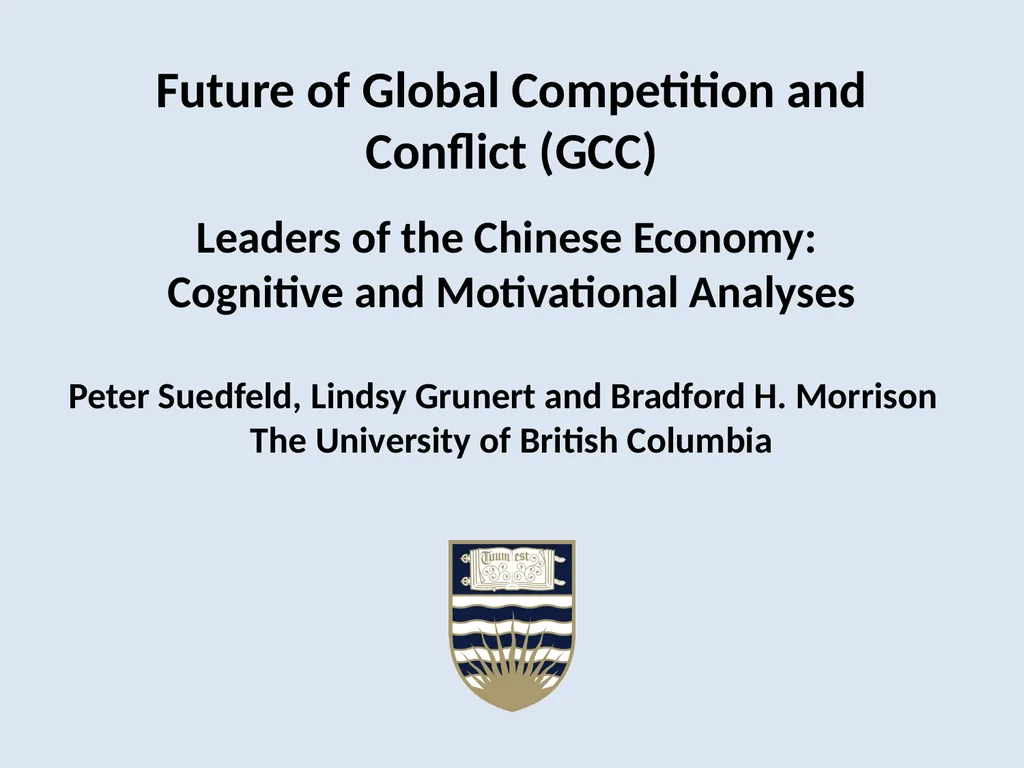
Future of Global Competition and Conflict (GCC)
Author: natalia-silvester | Published: 2025-05-24
Description: Future of Global Competition and Conflict (GCC) Leaders of the Chinese Economy: Cognitive and Motivational Analyses Peter Suedfeld, Lindsy Grunert and Bradford H. Morrison The University of British Columbia Main Question: What key aspects
Download Presentation
Download the PPT/PDF: Download
Transcript:
Loading transcript…